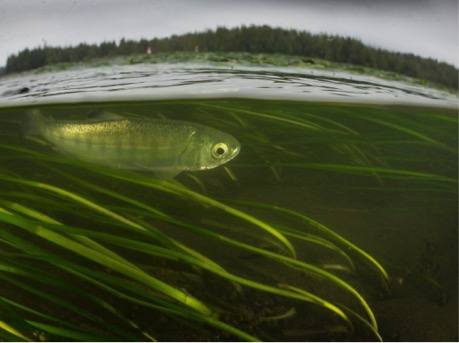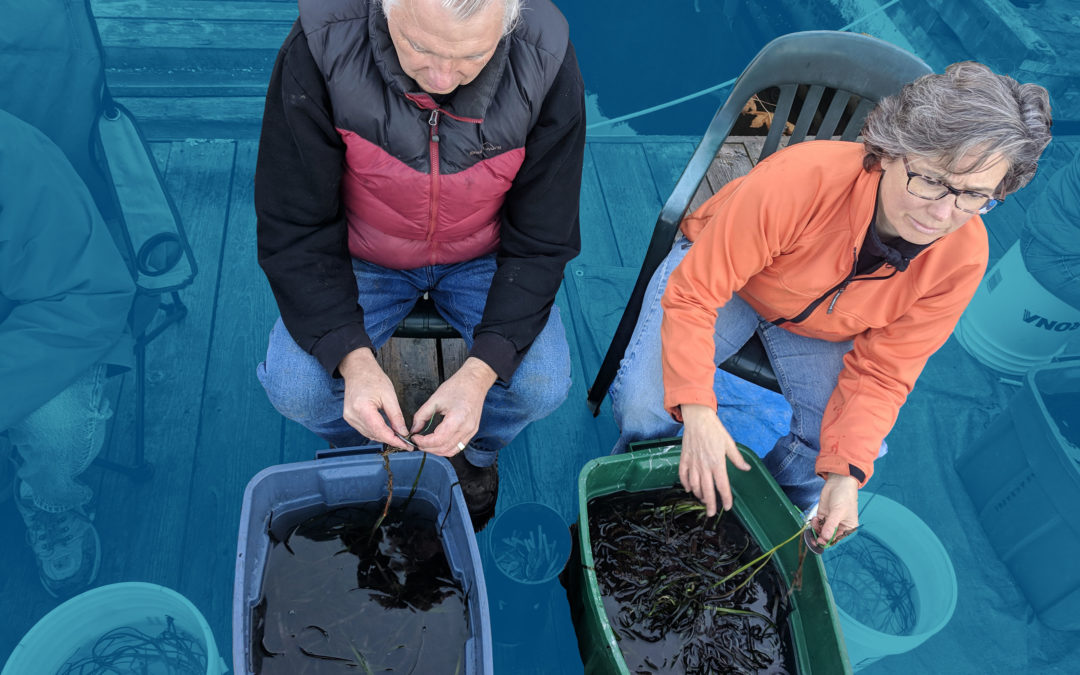People love to live, play, and spend time at the beautiful intersection of land and sea known as the nearshore. This region begins at the fringes of forests where we build our homes, runs down beaches where we relax and play, and flows into the ocean where we swim, boat, fish and dive.
In addition to supporting many of our favourite lifestyles, the nearshore is incredibly important from an ecological perspective. These areas are some of the most important habitats along B.C.’s coast for supporting biodiversity and ecosystem services. Seagrass meadows can support hundreds of species by providing shelter and food to zooplankton, invertebrates, juvenile salmon and rockfish, and marine birds. In Átl’ḵa7tsem, seagrass meadows comprise of two species of eelgrass: our native Zostera marina and the non-native Zostera japonica. In addition to providing home, food and refuge to other creatures, eelgrass helps sequester carbon (nicknamed blue carbon), stabilize shorelines, and recycle nutrients.
Eelgrass thrives when it has access to light, good water quality, and stable conditions. Accordingly, habitat disturbances such as winter storms, shoreline infrastructure (mooring buoys, docks, and underwater debris), and pollution can all negatively impact eelgrass meadow health. Thankfully, there are many ways to live respect these plants while still enjoying our cherished waterfront activities.
Community groups in Átl’ka7tsem are already embracing ways to live in tandem with nearshore ecosystems. Some are participating actively in nearshore restoration by helping with eelgrass transplants and subtidal debris removal (as a part of the Salish Sea Nearshore Habitat Recovery Project), while others are installing mooring buoys that have midline floats that reduce benthic scouring. To learn more about opportunities to restore and protect nearshore ecosystems and human activities please fill out our contact form.

Photo credit: Leanna Boyer

Volunteers prepare eelgrass shoots for a transplant at Searanch in October 2018 (Long Bay, Gambier Island).



